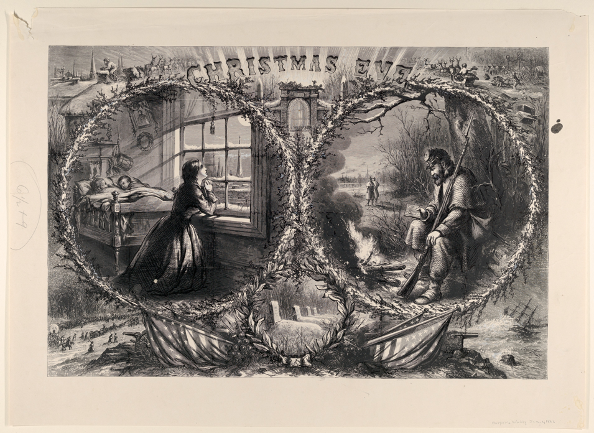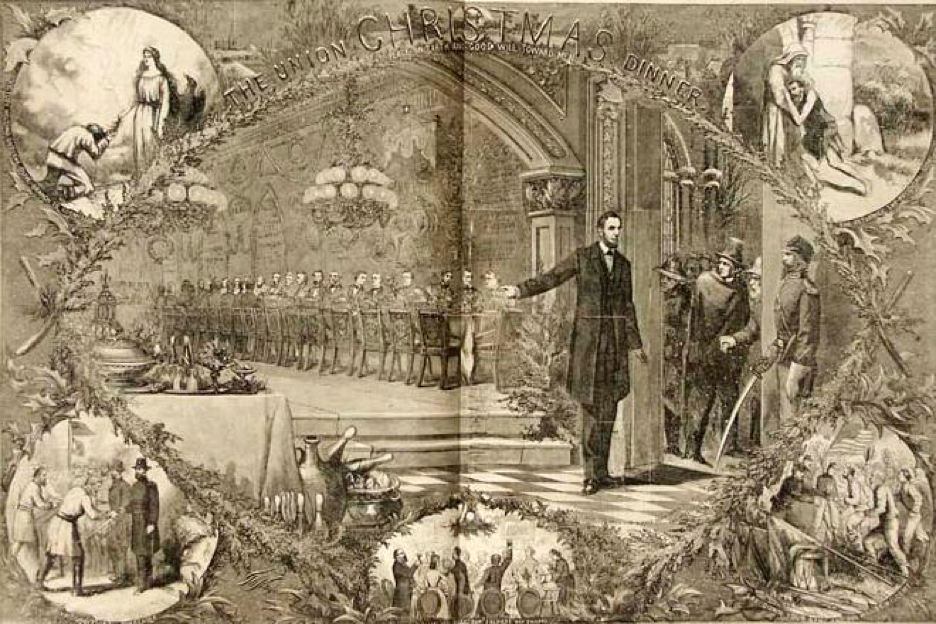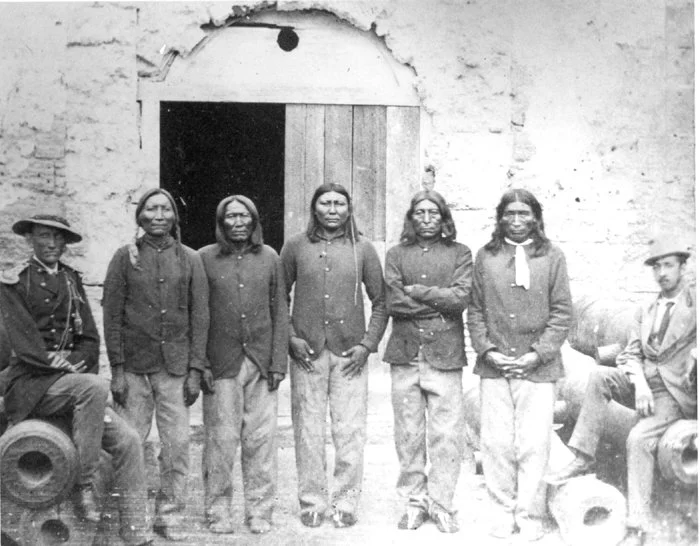Here, Paul H. Yarbrough has a unique take on slavery and America’s 13th amendment.
A February 1865 Harper's Weekly image showing celebrations in the U.S. House of Representatives after the adoption of the Thirteenth Amendment.
There is probably nothing as unrecognized and consequently misunderstood as the concept of slavery, at least as to the presentation by modernity media and so-called historical presenters.
Slavery has been around since the beginning of man’s history and has been a force in commerce as well as crime throughout the known and explored world.
Globally different parts of the planet had a hand in the concept and exercise of slavery. Whether or not one has been involved more than the other is of little importance since most of the so-called “experts” in the modern world have little understanding beyond some sort of non-historiography, notwithstanding their histrionic comic book knowledge of it.
This brief introduction is to fend off the usual rockets launched at the American South, its people having never enslaved any people, though they had ownership of the same. The South, of course, has the biggest bullseye painted on them for being the villainous culprits of slavery. Fraudulent bullseye or not, it is there.
“Never enslaved,” regarding the American South as stated above, means, of course, that no slave ship ever sailed from a Southern port. All slave ships were either Northern (mostly New England) or European registry. The South, in fact, purchased slaves (becoming owners) but did not enslave them. As a matter of fact, the South ameliorated the slaves’ condition from Africa to the west by purchasing them in and for the colonies (subsequent states) rather than watch them be delivered and sold to the West Indies or Brazil where they were more than frequently worked to death.
And, of course, the South as an agrarian people needed labor.
In fact, those self-righteous Yankee slavers (I can see your giant signature, John Hancock) could do themselves a service with a political truth if they would point out within their political blather that they (Yankees), in fact, were actually non-enslavers for the most part as they purchased Africans on the west coast of Africa from Africans who had enslaved those of other tribes. Slave traders these Yankees were, enslavers not as much, though, a bit.
Blame
But political affiliations in today’s modern west insist that all parties blame the American South for every aspect of slavery to the point of amending God’s authoritarian direction that the actual sin was “manstealing” and subsequent ownership became a responsibility of the owner to properly care for slaves (servants according to Christ and the Apostles).
And, as it was to be, cruelty came more on slave ships and far less on farms and plantations.
The so-called American version of slavery, often referred to as the “peculiar institution,” fared how among other racial groups throughout God’s planet? For example, the various Mongol empires swept through large swaths of Asia with slavery a common commerce and currency to use and be used.
Emigrating Mongolians immigrated to the east (to the western hemisphere) and developed ultimately, over time, a monstrously cruel slavery system among what became multitudes of American Indian tribes that easily denigrated themselves among their same race (Mongoloid) as slavers, enslavers and owners with descriptions quite uneven as to their monikers as “noble savages”. ( For a choice example by a 5-star historian, T.R. Fehrenbach’s Comanches: The History of a People is hard to put down when reading about such so-called nobility)
After the great American war between (and among) the states of Northern slavers, occasional enslavers and that modicum of slave owners, began against the states of Southern slave owners, then subsequently ending, the great fiction was and continues that the war was both a “Civil War” and a War to free the slaves in the South. Neither was true. However, the lie remains in the teeth of the American Yankee empire’s mendacious mastication, often an outright lie, often historical disobedience. But chew they do!
Falsehood
And the truth is that the same falsehood has prevailed via the contemporary political biosphere of two major political parties, either of which will say (and frequently do) anything for votes: The Democrats, who have mutated into 21st century Marxists and the Republican into anti-Constitutional national oligarchs—or nationalists of the anti-Jeffersonian pro-Hamiltonian stripe.
Both constantly have cried out that “we” had a civil war to end slavery.
Who the hell is WE?
Nationalists (Republicans) or Marxists (Democrats), as one famous Southerner, George Wallace, once said: “There ain’t a dime’s worth of difference.”
Subsequently, at the “War’s” conclusion the first and greatest change was the 13th amendment. Glory, slavery had ended in the now “National State of America.”
The secessionists states of 1861 were brought back into the national fold free of slavery and/or involuntary servitude. Praise the Lord, for some. Praise the state for others.
Section 1. Neither slavery nor involuntary servitude, except as a punishment for crime whereof the party shall have been duly convicted, shall exist within the United States, or any place subject to their jurisdiction.
Section 2. Congress shall have power to enforce this article by appropriate legislation.[1]
Celebrations, joy, parties, cheers all in the paths of a supposed cause of a new “Nation” rising above its blood-torn and raped, “Union,” abounded. The confederation of 1787 born of the 1776 secession was now the Lincoln-styled (though erroneous) “four score and seven” nation with new consolidated and gunpoint powers by a government that had ended slavery. Now, all of us–all of us– were truly free at last, free at last! Thank God (the new national government) almighty we were free at last.
However, especially for those who praised the state:
Within two generations, for the first time a constitutional amendment to repeal (though it was not called a repeal) a previous amendment was entered as an edict (states could no longer secede, so amendments became edicts) to amend the 13th amendment. The date was February 3, 1913.
Edict
The edict? The 16th amendment. The now-called nation (former union) government owns all labor and profit of the people and will return that amount that its edict allows via its spending managers.
Involuntary servitude not back? Wanna bet?
A war over slavery in 1861-65? Only fools believe they are free from such a victorious government then or now that make such claims. Because this government will claim anything it chooses, including by the involuntary servitude and sweat of the people’s brow, the edict that the people owe an involuntary servitude chunk of almost 40 trillion dollars to somebody else. Somebody from whom the people never voluntarily borrowed a cent.
But, if the people don’t pay “their fair share,” any number of the people can and perhaps will go to jail.
Again, with the “four score and seven” nation nonsense; although Lincoln and his Yankee soldiers said they were saving the union.
But about that 13th Amendment? What happened to it? What do you say, Honest Abe?
“The South was right.”
But, Yankees, like maggots eating out the innards of a dead skunk, prepare, now, to reenter new soil, once again down south, ready to recycle and feast again.
Deo Vindice.




















